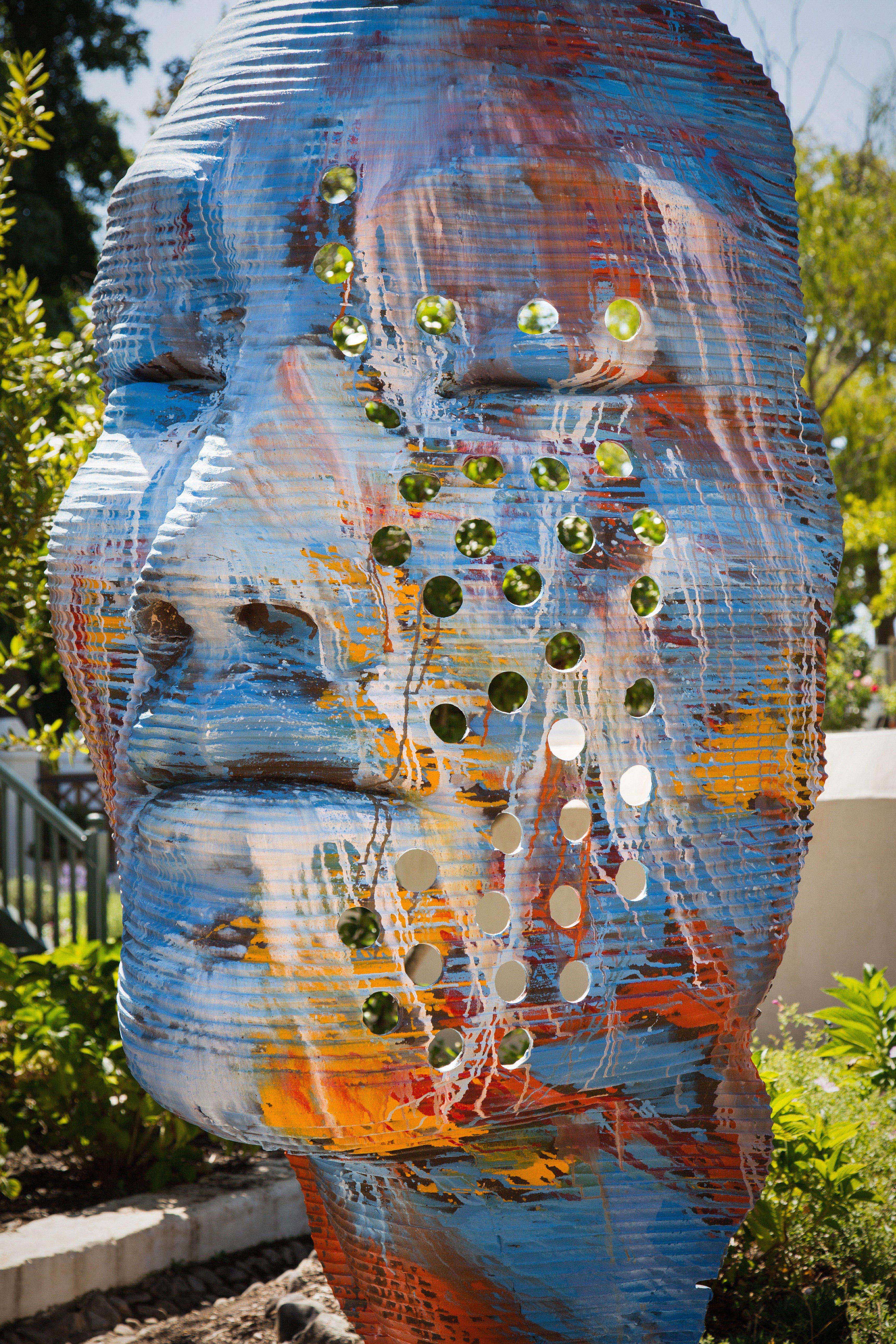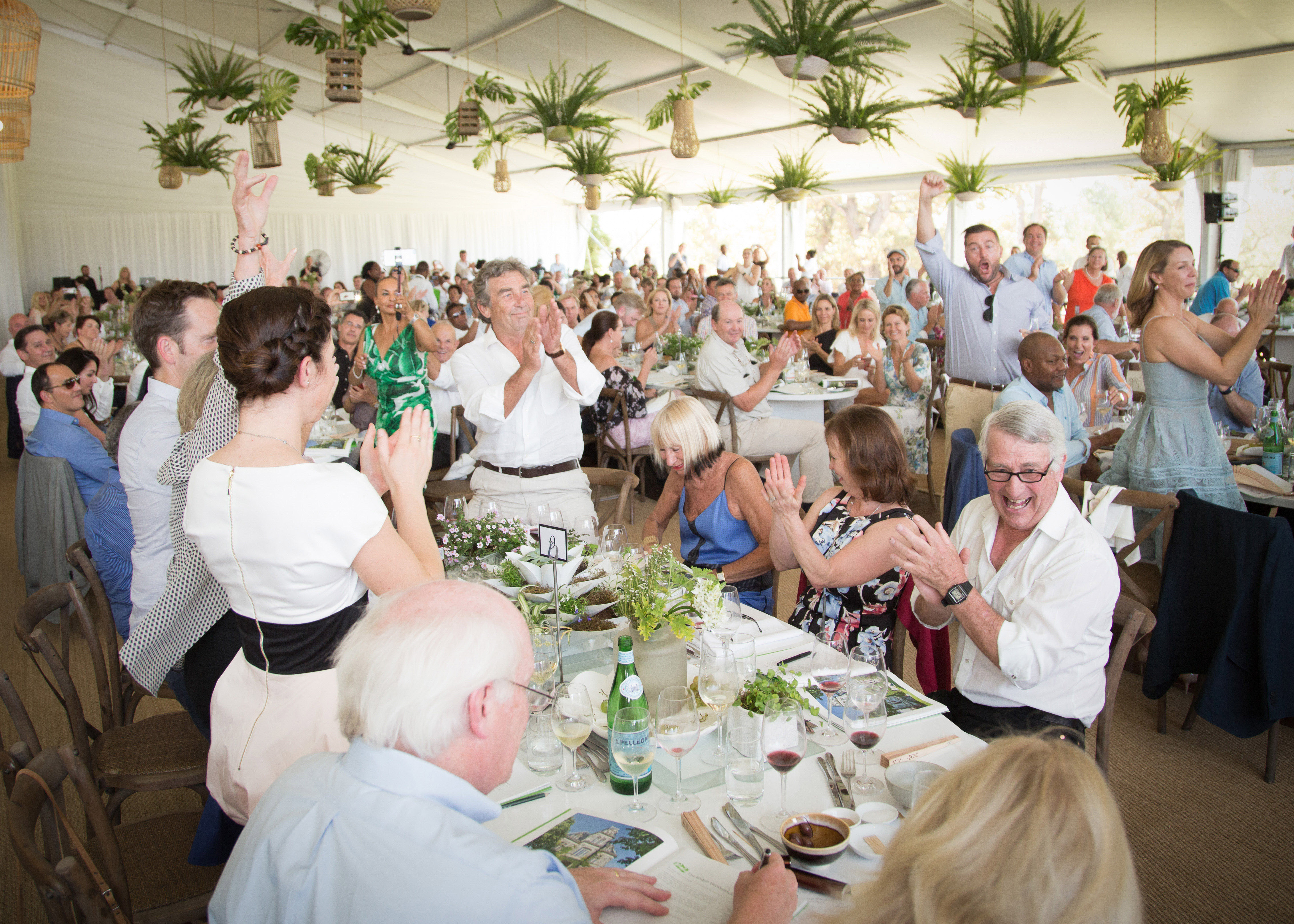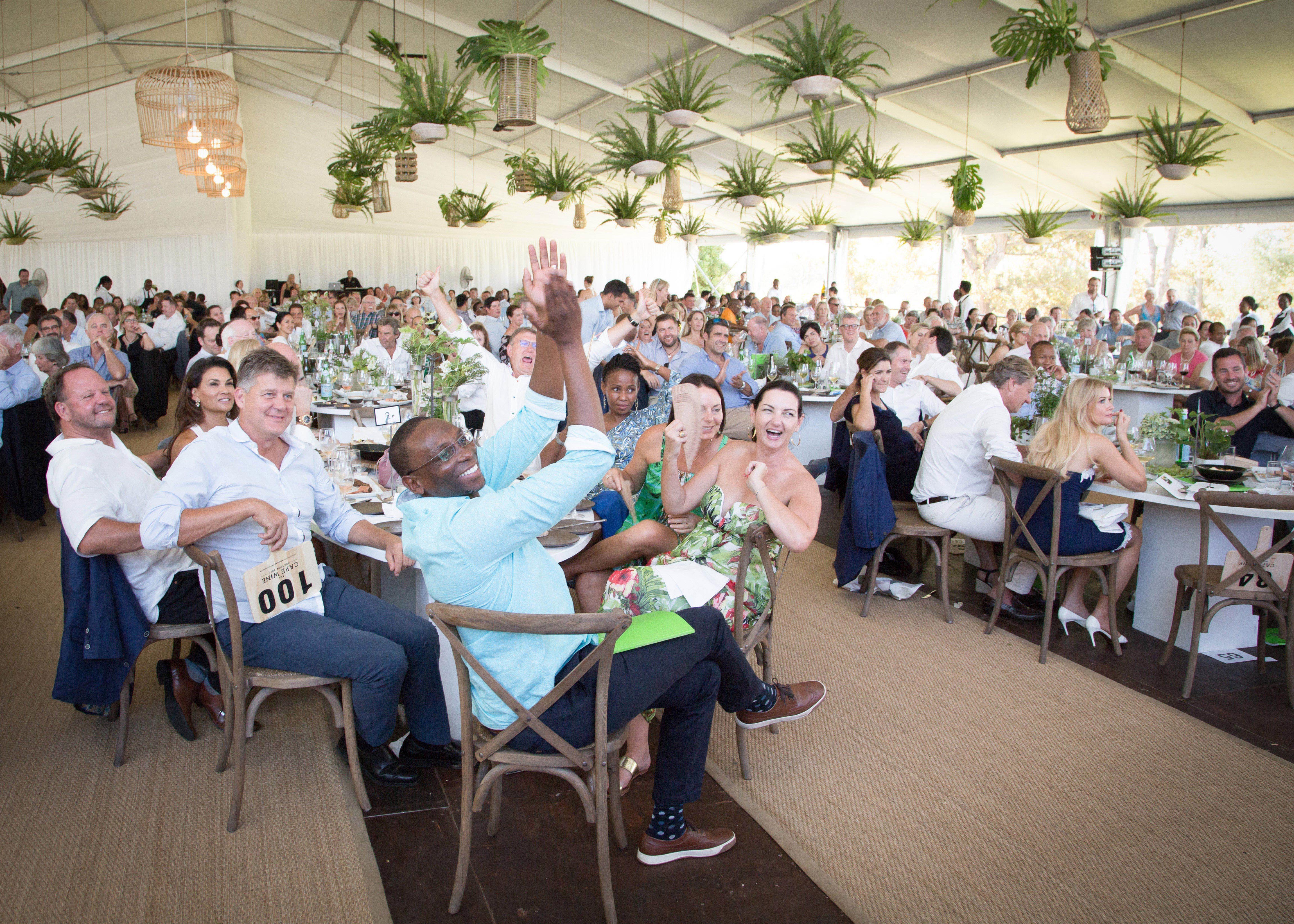The Cape Wine Auction raises R22.3 Million for education in the South African winelands
South Africa’s foremost wine charity auction took place over the weekend of 10 & 11 February 2017. Though this isn’t any ordinary wine auction. All proceeds raised at The Cape Wine Auction (sponsored by Nedbank Private Wealth) with no deduction, will be allocated to 22 beneficiaries, which make a profound impact on education and the lives of children in the Cape Winelands. Now in its third year, the Cape Wine Auction broke their own record by raising a staggering R22.3 million.
The idea for auction was born four years ago. Trustee, Mike Ratcliffe (managing director of the Warwick) was inspired by a trip to Auction Napa Valley, a wine auction with the mandate of subsidising health costs. Now with its third event The Cape Wine Auction has more than proved its mettle with raising treble of the funds of the first auction.
The auction itself is a roving event, in a bid to keep international guests coming back year after year to experience the beauty of South Africa’s wine farms.

This year’s event took place over two days in the Franschhoek Wine Valley at two different venues. Friday night’s The American Express Barrel Auction was held at the iconic La Motte Wine Estate. Wine-lovers came in their droves to sample (and bid) on rare, unreleased wines from some of the Cape’s top wine estates. The main event followed on the Saturday at the prestigious Anthonij Rupert Wyne, where 37 once-in-a-lifetime lots went up for bid. Importantly, these lots are created specifically for the auction, and come along once, for one auction, and then are not repeated.
Guests enjoyed canapés and drinks on the lawn, before heading inside the marquee for the seated lunch. Jungle plants hung down from the rafters, elegant white tables were set with Riedel stemware, and there was an adjacent bar complete with black and white flooring and a grand piano.

Bids of bucket-list travel experiences, luxury accommodation and limited edition wines went under the hammer with a trip Napa Wine Valley (and tickets to its famous auction) reaching a height of R3 million (the largest amount a lot has gone for in the auction’s existence since 2014.)
The Lionel and Anton Smit collaborative sculpture lot, created especially for the auction and standing at three metres tall went for an incredible R1.2 million.
Johann Rupert, owner of L’Ormarins stunned the crowd with a ‘surprise lot’: two tickets for this year’s Wimbledon men’s singles final as well as 20 bottles from his cellar of top vintage South African wine from the 1970s and 1980s.
Cape Wine Auction Director, Darielle Robertson said of the event: We set out aiming to raise R15 million this year but the final amount has literally left everyone speechless. The commitment to giving-back, changing lives and sharing good fortune was certainly testament in the overwhelming bids raised. With this money we can expand our programs and reach even greater highest with the progress we have achieved so far.”
The person making sure the funds raised make the most impact is Cape Wine Auction Trust Facilitator, Andi Norton.
“All beneficiaries are registered NPO or NGO organisations. A thorough due-diligence is conducted on the running of the organisations, including personal visits to the projects and regular meetings with the principle stakeholders,” Andi explains.

“The Trust selects beneficiaries based on the impact they provide both within the learning space and with regards to lowering barriers to education. Supporting a Cradle to Career model of education, with strategic focus on certain milestones within that model. A primary focus of the Trust is the Grade 3 milestone where children must have learnt to read in order to read to learn for the remainder of their school career.
“The impact has been enormous and has been not only in the Stellenbosch and Franschhoek valleys, but also as far afield as the Swartland and the Hemel-en-Aarde Valley. The Trust’s model of collaboration between its beneficiaries has resulted in children not only benefiting from improved education, but also receiving meals, psychosocial support, and access to technology, after-school care and assistance with transport. This model of collaboration between our beneficiaries has increased efficiency and decreased duplication, and is a model of which we are very proud.”
-Malu Lambert